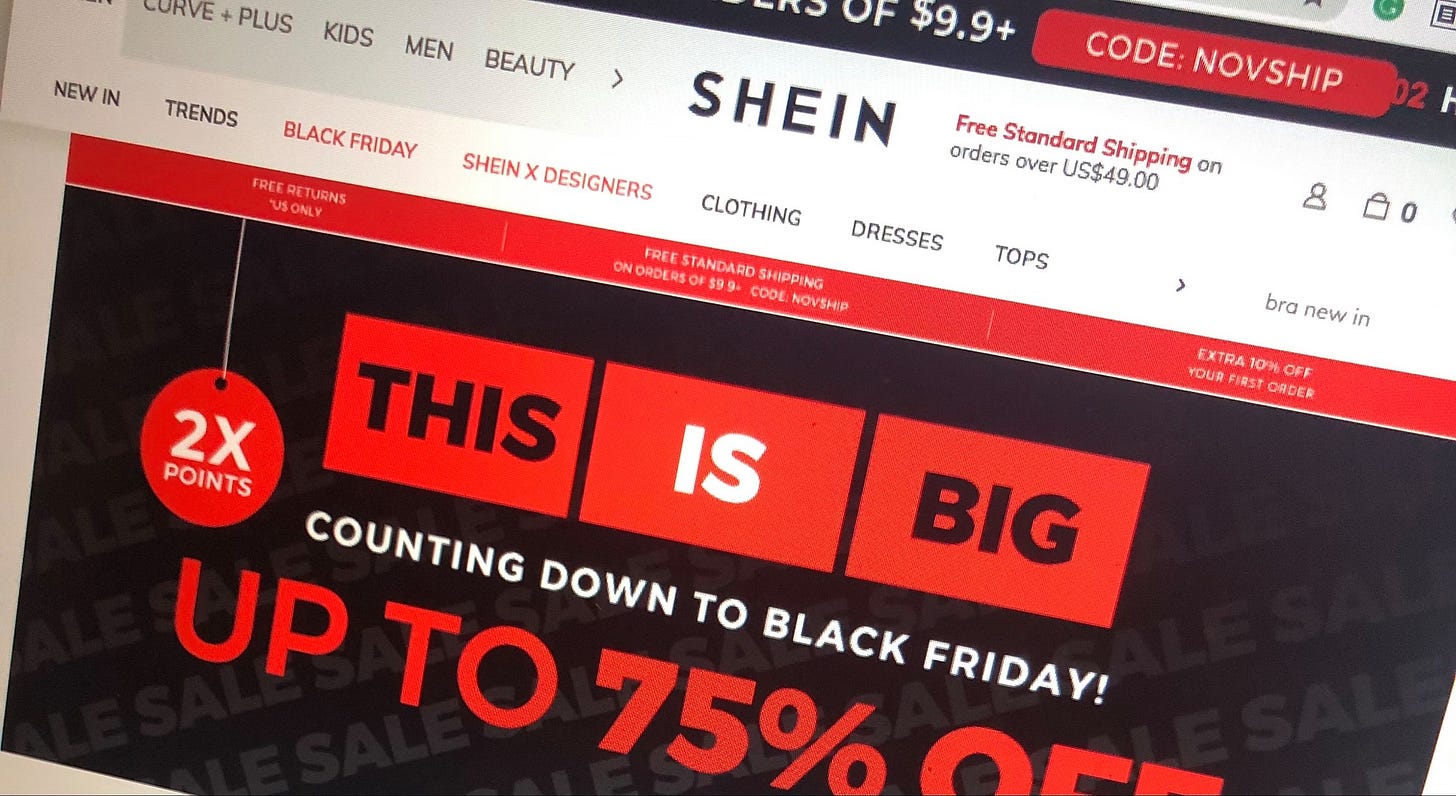A New Report Details Conditions and Wages at Shein Factories
Some workers say they are clocking 75 hours per week.

Shein is the ultra-fast, ultra-cheap fashion brand that has taken over social media in the last two years. It’s a phenomenon that has come with its fair share of bad press, including backlash over racist symbols in their products, and accusations from small designers who found their designs replicated for a small fraction of the original price. Regardless, there has been no slowing down this wildly successful clothing machine and of course, that has raised some questions.
For starters, how are the prices that low and even often undercut competitors like H&M and FashionNova by almost 50%, selling pieces at as low as $0.99? Last week, a report in The Daily Mail explained that a tax loophole might be part of the equation. Still, that didn’t answer the question of how they are making these pieces so quickly and at such huge volumes.
This week, a new report by Timo Kollbrunner at the runner at the Public Eye may reveal some answers via an undercover researcher in China. According to their findings, some Shein employees working in Nancun Village, an area which is almost exclusively Shein factories, were working close to 75 hours per week, well over the legal 56 hours per week maximum in China. Also in the factories, the researcher found no emergency exits and remarked that they didn’t want to “think about what would happen if a fire broke out there.”
It appeared that the reason workers were clocking so many hours was in order to make a living wage of any sort. One employee explained that these skilled workers are making a piece-rate, meaning they are not paid hourly or salary but by the item they make. “In a good month, he earns up to 10,000 yuan or approximately CHF 1,400 to take home; in bad months it can be only a third of that. There is no overtime premium,” they report. They also note that orders for certain styles are generally small, around 100 to 200 pieces, indicating that its expected trends move quickly. Workers, who are often highly skilled, have to keep up with changing patterns and demands because of this.

None of these findings are even marginally surprising, given what we already understand about the fast fashion ecosystem. It’s been evident for decades that if a piece of clothing seems too good, trendy, or cheap to be true, there is probably something nefarious going on behind the scenes. But what does it mean for you as a consumer? Trends and fast fashion are perpetuated by the people making money off of them. Sure, the influencer on TikTok showing off their hauls is working to legitimize overconsumption, but at the end of the day we need the brand to make less. Shein gave a statement saying they would look into the matter, but that can’t be the end of the story. Overwhelming consumer awareness about the unfair conditions used to make an absurd amount of product can push them to confront the issues and force the government to look into how it's being allowed to happen.



